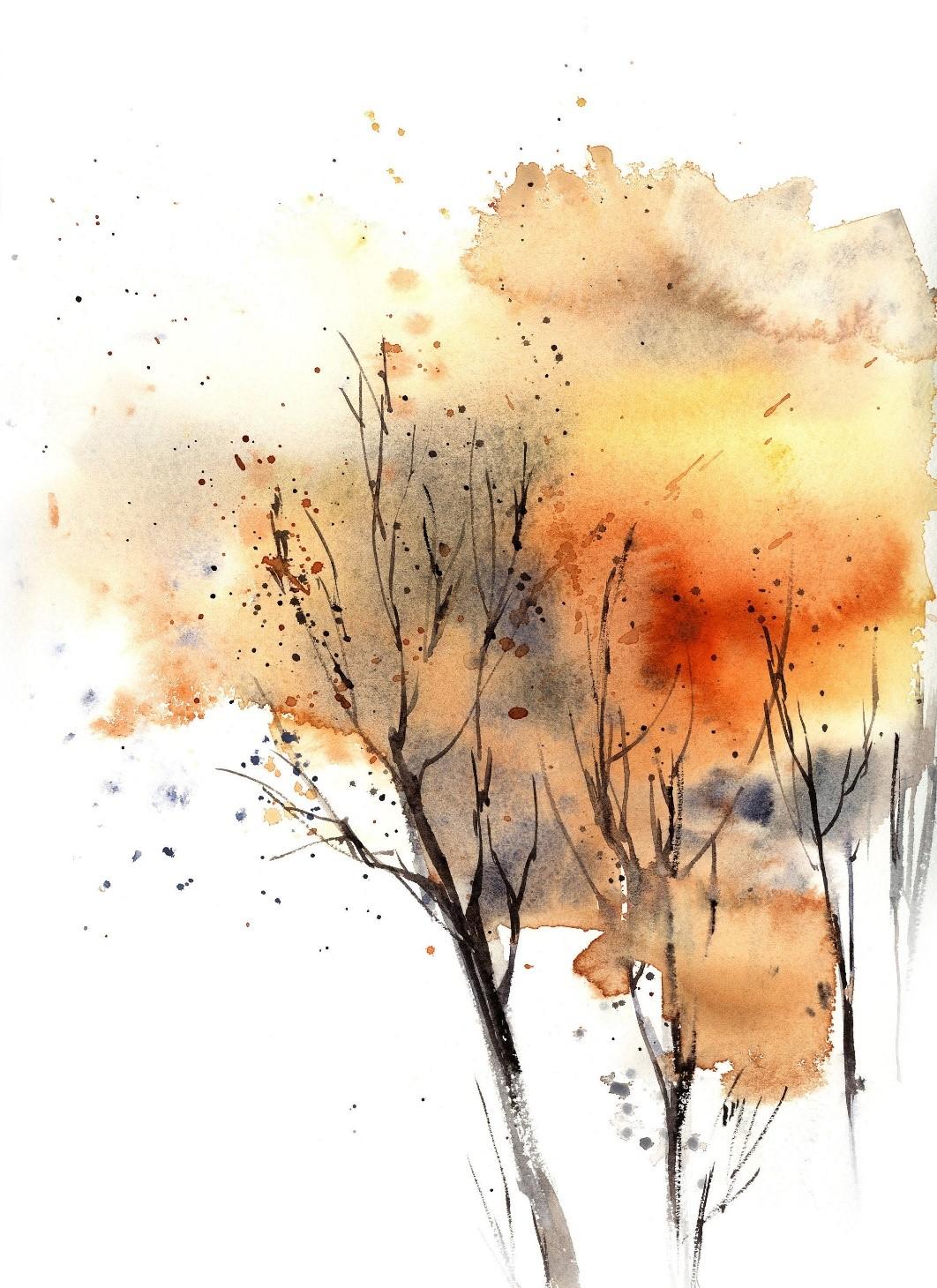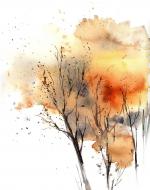Created by Kaitlynn Wolffe on Mon, 05/06/2024 - 10:09
Description:
Depicted above is an abstract painting of an autumn tree as it begins to lose its leaves. Simply titled Autumnal Tree Painting, the empty background and the light watercolour style work to create a hint of transience and lightness within the painting. Yet, it also creates a theme of peace. One could even recognize it as triumphant, as the tree works to harden itself for another winter battle. These themes are also strongly displayed in the poem “Nothing Gold Can Stay,” by Robert Frost. Written in 1923, the poem contains words on the transience of life that, although many have written and seen them before, are interposed with hints of something further. Frost’s poem begins with the lines, “nature’s first green is gold,” creating the connection of the value that spring, or “nature’s first green,” holds (Frost 1). As it goes on, it describes this value as “its hardest hue to hold,” as spring can never remain constant and must eventually lead into autumn and winter (2). This recurrent cycle is reminiscent of Freneau’s poems, especially in comparison to their allusions to the length of an hour, proving that this theme of cyclical, and thus ever ending, beauty in life, is addressed often throughout history. Yet, “in understanding how Frost’s poem differs,” he manages to convey a unique message even within this common theme (Quinn 622).
Within this poem, although the theme of impermanence may convey thoughts of sadness, “Frost’s poem is not one of sadness but of triumph, even in an earthly context. Warren Beck admirably expresses this triumph: ‘But the golden has its hour in spring, its age in legend, its moments in the morning sky…’” (622). The nature of life is eternally tied to its fate with deat. Despite the inevitability of death and the understanding that humans must accept their mortal fate, these fleeting lives can still remain triumphant as they face their end, as they learn that they “can realize [their] transience is a sign of mastery which is at the very root of…humanity as opposed to Nature” (622). In addition to this theme, Robert Frost manages to use his unique and vivid sense of imagery to capture the bittersweet yet empowering beauty of life’s fleeting moments, inviting the reader to reflect on the inherent transience of existence.
Works Cited
Frost, Robert. “Nothing Gold Can Stay.” 1923. PoetryFoundation.org, https://www.poetryfoundation.org/poems/148652/nothing-gold-can-stay-5c09....
Gerber, Philip L.. "Robert Frost". Encyclopedia Britannica, 22 Mar. 2024, https://www.britannica.com/biography/Robert-Frost. Accessed 20 April 2024.
Quinn, M. Bernetta. “Symbolic Landscape in Frost’s ‘Nothing Gold Can Stay.’” The English Journal, vol. 55, no. 5, 1966, pp. 621–24. JSTOR, https://doi.org/10.2307/812213. Accessed 21 Apr. 2024.
Rodionov, Sophie. Autumnal Tree Painting. 2019. Saatchiart.com, https://www.saatchiart.com/art/Painting-Autumnal-tree/532433/7905471/view.


